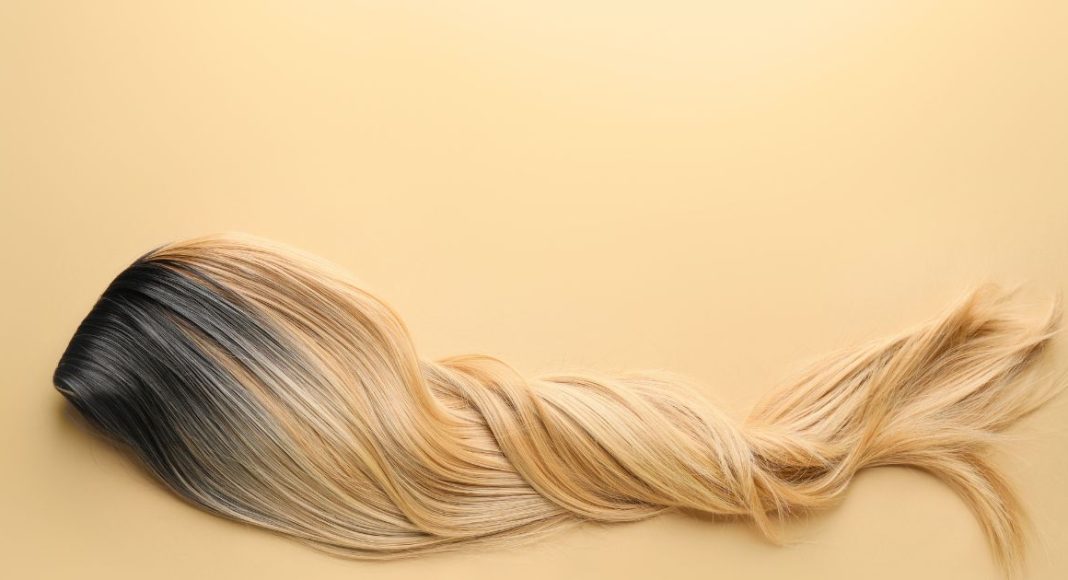Wigs have transcended their functional origins to become an integral part of personal style, identity expression, and even practical solutions for hair-related challenges. In this guide, we’ll delve into the two main methods of wig attachment — glueless and glue wigs — to help you understand the advantages and drawbacks of each.
Choosing between glueless wigs and glue wigs involves weighing factors such as convenience, durability, realism, and personal comfort. Glueless wigs provide an array of benefits for those seeking hassle-free styling and flexibility, while glue wigs offer a secure and long-lasting hold, especially during high-activity situations.
As we navigate through the pros and cons of each option, you’ll gain a comprehensive understanding of which type of wig attachment aligns best with your lifestyle, preferences, and needs. Whether you’re an experienced wig wearer or considering your very first wig, this guide will equip you with the knowledge to make an informed decision that enhances your wig-wearing experience.
So, let’s embark on this journey of discovery, unraveling the intricacies of glueless wigs and glue wigs, to find the perfect balance between ease and durability, style and stability.
Glueless wigs
A glueless wig refers to a type of wig that doesn’t require the use of adhesive (glue) to secure it to the wearer’s head. Traditional wigs often use adhesive products like wig glue or tape to keep the wig in place, which can be time-consuming to apply and remove and might also cause skin irritation for some individuals.
A glueless wig is designed with features that allow it to be worn without the need for adhesive. Some common features of glueless wigs include:
- Adjustable Straps: Glueless wigs typically have adjustable straps or bands inside the cap that can be tightened or loosened to achieve a secure fit on the wearer’s head.
- Combs or Clips: Many glueless wigs have small combs or clips sewn into the cap that can be attached to the wearer’s natural hair for added stability.
- Elastic Bands: Some glueless wigs have elastic bands that go around the back of the head to provide a snug fit.
- Lace Front or Full Lace Construction: Glueless wigs often use lace front or full lace construction. Lace front wigs have a sheer lace panel at the front hairline, which creates a natural-looking hairline. Full lace wigs have a lace cap that covers the entire head, allowing for versatile styling and a natural appearance.
- Breathable Cap Construction: Glueless wigs are often designed with breathable cap constructions to provide comfort and allow air circulation to the scalp.
Glueless wigs are popular among individuals who want the convenience of wearing a wig without the hassle of using adhesives. They can be easier to put on and remove, making them a great option for those who want to switch up their look frequently or who may have sensitivity to wig adhesives. You can buy Nadula glueless wigs here.
Pros of Glueless Wigs
- Convenience: Glueless wigs are easy to put on and remove without the need for adhesives. This saves time and effort, making them a convenient choice for daily wear or quick styling changes.
- Skin-Friendly: Glueless wigs eliminate the potential for skin irritation or allergies caused by wig adhesives, making them a suitable option for individuals with sensitive skin.
- Comfort: Without the need for adhesive products on the scalp, glueless wigs often provide greater comfort, allowing for natural airflow and reducing the risk of discomfort during prolonged wear.
- Less Mess: Glueless wigs spare you the mess and residue associated with applying and removing wig glue or adhesive tape.
- Versatile Styles: Many glueless wigs feature adjustable straps, combs, or clips that allow for easy customization of fit and style, including different parting options.
- Lower Maintenance: Glueless wigs generally require less maintenance, as there’s no need to deal with adhesive-related cleanup or reapplication.
- Less Stress on Natural Hair: Glueless wigs are gentler on your natural hair, as you don’t need to use adhesives that could potentially weaken or damage your hair over time.
Cons of Glueless Wigs
- Less Secure Hold: Glueless wigs may not provide as secure a hold as glued wigs, which can be a concern during high-activity situations.
- Styling Limitations: While glueless wigs offer versatile styling options, intricate and elaborate styles like high ponytails or complex updos might be more challenging to achieve.
- Adjustment Required: Some glueless wigs may need occasional readjustment during the day to maintain a secure fit.
- Limited Longevity: The lack of adhesive can mean that glueless wigs might not stay in place as well as glued wigs, which could affect their longevity.
- Potential for Shifting: Without adhesive, glueless wigs may be more prone to shifting on the head, especially if not secured properly with combs or clips.
- Less Intense Styles: Glueless wigs might not be the ideal choice for situations that require a very sleek and secure hairstyle, such as professional performances or competitive sports.
- Sizing Challenges: Achieving the perfect fit can be a bit more challenging with glueless wigs, as some might not have the same level of adjustability as others.
In conclusion, glueless wigs offer numerous benefits in terms of comfort, convenience, and reduced maintenance. However, they may not provide the same level of hold as glued wigs, which could impact their suitability for certain situations. Ultimately, your choice will depend on your personal preferences, styling needs, and lifestyle considerations.
Glue wigs
“Glue wigs” refers to wigs that are secured to the wearer’s scalp using adhesive products like wig glue or adhesive tape. These adhesive products are used to attach the wig cap directly to the skin, providing a secure and long-lasting hold. Glue wigs are also sometimes referred to as “wig glued” wigs.
The process of applying a glue wig involves carefully applying the adhesive along the perimeter of the wig cap or onto the wearer’s scalp, then pressing the wig firmly onto the glued area. This method creates a strong bond between the wig and the scalp, allowing the wig to stay in place even during activities such as sports or vigorous movement.
Glue wigs can provide a very natural and secure look, as the wig appears as if it’s growing directly from the wearer’s scalp. However, using adhesive requires proper technique to avoid skin irritation, and the removal process needs to be done carefully to prevent damage to the skin or wig.
It’s important to note that while glue wigs offer a stronghold, they may require more time for application and removal compared to glueless wigs, which can be attached using adjustable straps, combs, or clips. Additionally, some individuals may have sensitivities or allergies to wig adhesives, so a patch test is recommended before using adhesive products on the skin.
Pros of Glue Wigs
- Secure Hold: Glue wigs offer a strong and long-lasting hold due to the use of adhesive products like wig glue or tape. This makes them suitable for active situations and events where the wig needs to stay in place.
- Realistic Appearance: Glue wigs can provide an incredibly realistic look, especially around the hairline, as the adhesive creates the illusion that the hair is growing directly from the scalp.
- Versatile Styling: With a secure attachment, glue wigs enable you to experiment with a wide range of hairstyles, including elaborate updos, high ponytails, and intricate braids.
- Durability: Glued wigs tend to have greater durability and longevity compared to glueless wigs, as the adhesive ensures a more stable hold over time.
- Confidence Boost: The secure hold of glue wigs can provide wearers with added confidence, knowing that their wig will remain in place even during dynamic activities.
- Complex Hairstyles: Glue wigs are often preferred for special occasions or performances where intricate and glamorous hairstyles are required.
- Less Adjusting: Once properly applied, glued wigs usually require minimal readjustment throughout the day, contributing to a hassle-free experience.
Cons of Glue Wigs
- Application Process: Applying adhesive and properly securing the wig can be time-consuming, requiring precision and practice to achieve the desired natural look.
- Potential for Skin Sensitivity: Some individuals may experience skin irritation, allergies, or discomfort from the use of wig glue or adhesive tape.
- Removal Process: Removing glue wigs requires a careful process to avoid damage to the wig or discomfort to the scalp. Residue from the adhesive can also be challenging to clean.
- Less Comfort: The adhesive used in glue wigs can feel less breathable and comfortable compared to glueless wigs, potentially causing discomfort during extended wear.
- Dependency on Adhesive: Glue wigs rely on adhesive products for their hold, meaning you need to have those products on hand and ensure they’re properly applied for the wig to stay in place.
- Limitation on Hairstyling Between Applications: While the hold is strong, styling changes between wig applications can be more limited due to the adhesive residue and potential hair damage from frequent application and removal.
- Learning Curve: Achieving a natural look and proper attachment with glue wigs may involve a learning curve, particularly for beginners.
In conclusion, glue wigs offer a secure and realistic attachment method, making them an excellent choice for situations that require stability and complex styling. However, they do involve a more intricate application and removal process, and some wearers may experience skin sensitivity to adhesives. Your decision should be based on your desired look, level of comfort, and your willingness to commit to the adhesive application process.
Final thoughts
In the realm of wig choices, the debate between glueless wigs and glue wigs has unveiled a range of compelling considerations. Both methods offer unique advantages and drawbacks, catering to different preferences, needs, and lifestyles. As we conclude this exploration of “Glueless Wigs vs. Glue Wigs: Pros & Cons,” it’s evident that the choice between these two attachment methods boils down to a delicate balance between convenience, security, comfort, and style.
Glueless wigs shine in their simplicity and user-friendly application, offering a hassle-free experience that appeals to those seeking comfort, quick changes, and a gentle touch on the skin. On the other hand, glue wigs hold their ground with their unwavering grip, delivering unparalleled durability, confidence, and the potential for intricate styling that can turn heads in any setting.
As you ponder the insights provided in this guide, remember that personal preferences, lifestyle demands, and comfort levels are paramount in making the right choice for you. Whether you’re drawn to the ease of glueless wigs or the steadfast hold of glue wigs, the path you choose will ultimately be a reflection of your unique style, routine, and desires.
In this dynamic world of wigs, the power of choice remains firmly in your hands. By weighing the pros and cons thoughtfully, you’re well-equipped to make an informed decision that aligns harmoniously with your personal flair and practical needs. Whichever path you take, embracing your chosen wig attachment method is the first step to embracing a world of endless hair possibilities.


